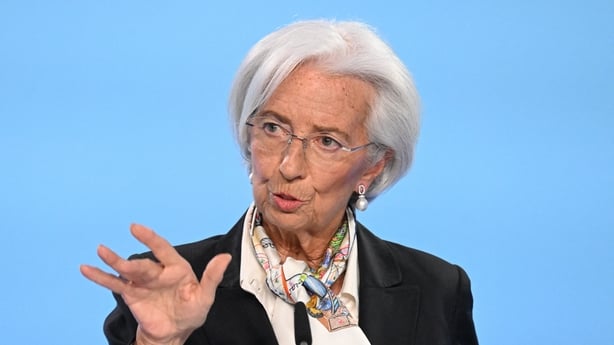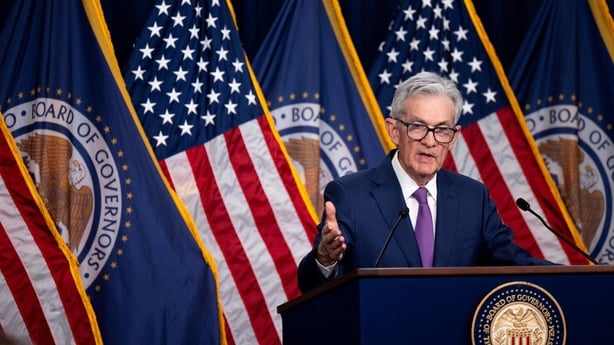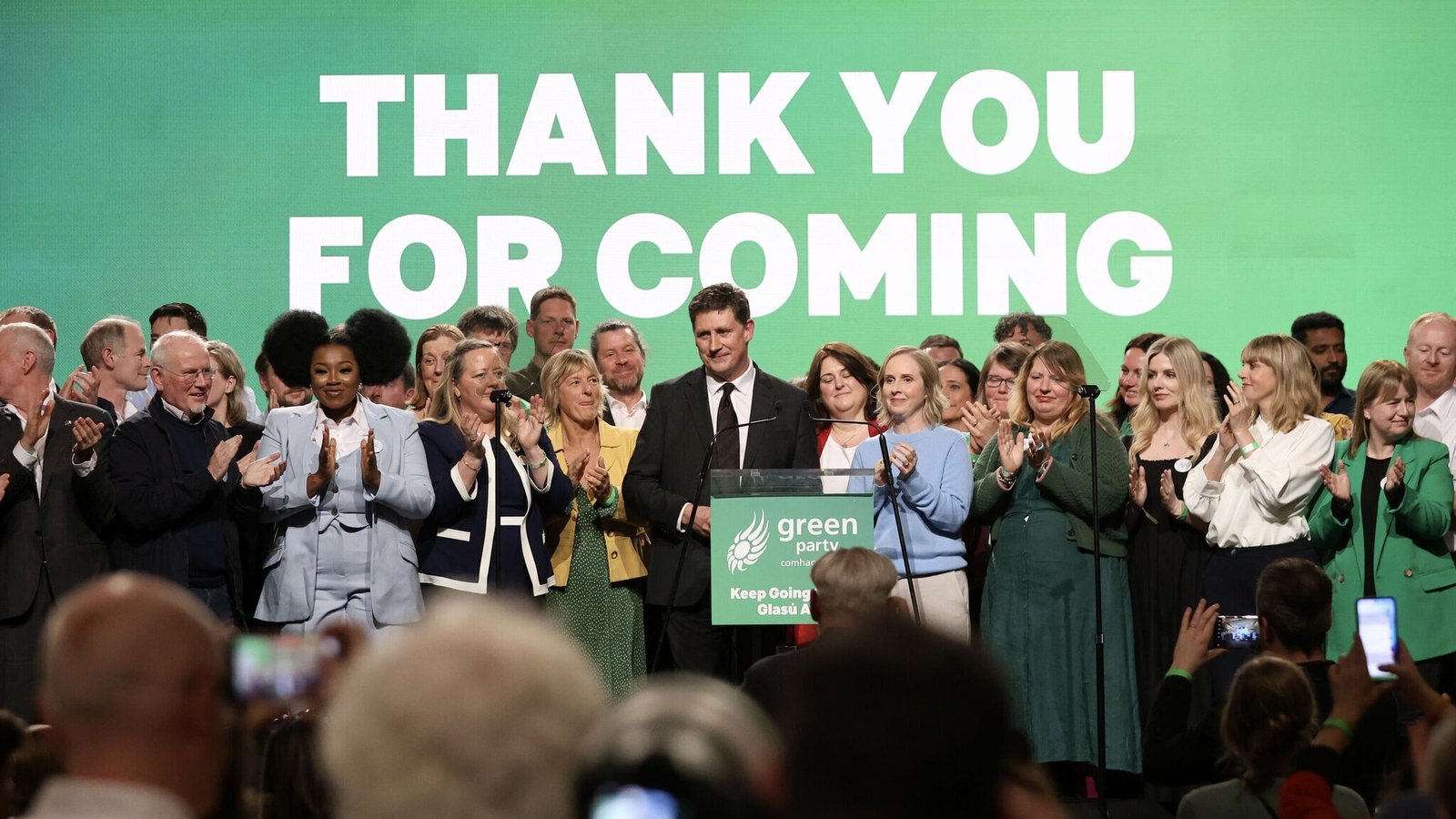On the precipice – are interest rates about to fall?

When it comes to talking about interest rates, the European Central Bank (ECB) generally does not tend to use language that is clear, or that is easily understood by the average person on the street.
For example, it describes its policy around the availability of money in the economy right now as “restrictive” and how that policy affects ordinary citizens and businesses across Europe is through the “transmission” of it into “financing conditions”.
What it really means, of course, is that by hiking interest rates over the past year and a half, it has reduced the amount of money in the pockets of consumers and the bank accounts of firms, lowering what they spend and invest, in order to tame inflation.
But it uses this type of dense language deliberately, so as to never quite reveal exactly what it is thinking.
Instead, if prefers to leave markets to read between the lines and interpret its missives, giving it the wriggle room to change tack, if necessary, as circumstances require.

What was unusual though about the statement issued by the ECB’s Governing Council about its plan for interest rates following its meeting on Thursday was its clarity – relatively speaking.
“If the Governing Council’s updated assessment of the inflation outlook, the dynamics of underlying inflation and the strength of monetary policy transmission were to further increase its confidence that inflation is converging to the target in a sustained manner, it would be appropriate to reduce the current level of monetary policy restriction,” it said.
In other words, if the next round of data it collects and analyses shows that the rate at which prices are increasing across the Euro zone is still on target to reach 2% soon, then it will cut interest rates.
It was the first time that the ECB had used this kind of firm language about cutting rates in an official statement.
Speaking to the press after the meeting, ECB president Christine Lagarde described this new sentence as “important”.
She also said it was a “loud and clear indication” of the bank’s current thinking.
Well, that is good news, isn’t it?
It absolutely is.
Since July 2022, the ECB has jacked up rates on ten occasions, bringing its main deposit rate from an historic low of -0.5% to a record high of 4% where it currently sits.
The aim was to tame runaway prices, fuelled in the main by a wall of money hitting a constrained global economy as the Covid-19 pandemic began to ease and stratospheric increases in the cost of energy caused by Russia’s invasion of Ukraine.
That spike in the cost of living created a world of pain for many people across Europe and here in Ireland.
The ECB’s primary mandate is to maintain price stability in the Euro zone, so it was forced to act.

And while it was a bit slower out of the traps than others, such as the Fed in the US and the Bank of England, that action is now having the desired effect.
Inflation in the Euro zone last month was 2.4%, according to preliminary estimates, down from 2.6% in February and a peak of 10.6% in October 2022.
While here in Ireland, inflation in March was 2.9%, down from 3.4%.
And so, while the cost of living is unlikely to fall through deflation, at least the pace at which prices are rising is falling back to a more manageable rate through disinflation.
So how soon do we think it will be before rates start to get cut?
Most bets are now on June.
That will be the month that ECB decision-makers will receive complete data on first-quarter wage increases – a factor that carries potential inflationary effects.
But there are also other issues that could derail a June decision to trim rates.
Services inflation in Europe, currently running at 4%, is sticky and not falling as quickly as many would like to see.
Also, the midweek inflation figures out of the US were not as low as expected, leading to market speculation that an expected rate reduction by the Fed in the summer may now be in doubt.
This might create difficulty for policymakers in Europe, given the close trade and financial ties the European economy has with the US.

“Obviously, anything that happens matters to us and will in due course be embedded in the projection that will be prepared and released in June,” Ms Lagarde said.
“The United States is a very large market, a very sizeable economy, a major financial sector as well.”
“We are not assuming that what happens in the euro area will be the mirror of what happens in the United States.”
However, on the other hand, also in the background is ongoing concern about the strength of the flagging Euro zone economy, which last year grew by 0.4% and is only forecast to expand by 0.8%.
Once there is any sign that inflation is still going in the right direction, EU leaders will be keen to see the ECB cut rates so that investment returns to Europe, boosting growth.
“Services inflation is itself quite sensitive to wage inflation – hence the ECB’s focus on wage developments,” said Des Lawrence, Senior Investment Strategist at State Street Global Advisors.
“We think the ECB can continue to prepare the market for a rate cut at its June meeting.”
Let’s be positive though. If rates are cut, how much is likely and will there be more?
The consensus among analysts is that the first ECB cut in June will be of the order of a quarter of 1%.
Enough to get the process going, but not so much that will cause a sudden jolt in economic activity that could spark prices to rise again.
What happens after that is less clear though with many factors potentially having a bearing on the disinflation progress.
The market broadly agrees though that the ECB will cut rates three or four times this year in total.
By year end, the expectation is that rates will have fallen back to 3.5%.
“Barring any significant surprises on the incoming wage and inflation data we believe it can probably deliver about 100 basis points of policy cuts this year,” said Mr Lawrence.
Great, that means my mortgage repayments will fall then, doesn’t it?
Eh, not so fast.
If you hold a tracker mortgage, you will be smiling, because your contract more than likely states that once the ECB cuts its rates, your rate will automatically fall.
But if you are coming off a fixed rate, as around 140,000 mortgage holders will this year, or if you are on a variable rate, you might not see the benefit right away.
The Irish lenders have already made it reasonably clear that they will not be reacting immediately to cut mortgage rates when the ECB begins easing.
Their argument has been that they were slow to pass through the full effects of rate increases to Irish borrowers as the ECB put them up and have only passed through around half of the full whack of the 4.5% hike.

So, when rates fall, they are likely to follow a similar pattern.
This means that average new mortgage rates here, which rose to 4.29% in January (compared to a fall in the Euro zone average to 3.91%), are set to remain high for a while.
Whether the same rationale will apply to Irish deposit rates, which equally did not ascend at the same pace as the ECB’s rates, remains to be seen.
But we should also keep in perspective the extent of any potential gains for mortgage holders from a gradual cut in rates that may be spread out over some time.
According to Brokers Ireland, a tracker mortgage holder with a €180,000 mortgage with a remaining term of 15 years on a tracker of 0.75% would have had a monthly repayment of just over €1,057.62 before the ECB began hiking rates.
The repayment currently would be €1,446.98 but with a 0.25% reduction in the ECB rate it would bring the monthly repayment down to €1,423.43.
Every little helps of course, as a large retail brand likes to say.
But even if the process of cutting rates does finally begin as hoped in June, it would be unwise to get carried away.
Because it will likely be several more years before consumers regain the purchasing power that has been stripped from them in recent times.





